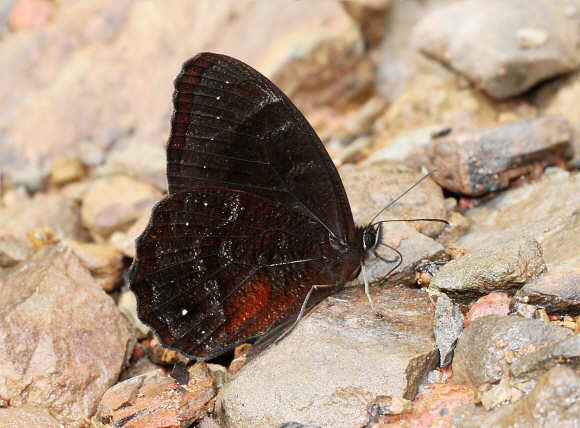
Introduction
There are 1100 known species of Satyrinae in the neotropical region. About 570 of these are placed in the subtribe Pronophilina – a diverse group of high altitude cloudforest butterflies, all of which are confined to the neotropical region. The vast majority are found only in the Andes, but 4 species are known from the Atlantic cloudforests of Brazil, and there are a further 6 species that are endemic to Guatemala, Costa Rica or Mexico. More oddly there is one genus Calisto that is found exclusively on the Caribbean islands of Cuba and Hispaniola.
The genus Pedaliodes comprises of over 270 known species, with new species being discovered at regular intervals as their remote cloudforest habitats become more fully explored. No less than 114 ‘new’ Pedaliodes species were discovered and described between 1999 and 2004 by Viloria, Lamas, Pyrcz and other workers. The eventual total is expected to exceed 600 species.
Pedaliodes are small to medium sized butterflies. The vast majority have plain, blackish uppersides, although several species e.g. peruda, praxithea and triaria are banded with orange. The undersides of all species are brown or blackish, mottled with cream or white, and in some species marbled or banded prominently with cream.
Some of the species are widespread but many are confined to remote Andean peaks, isolated from their cogeners. Many are so similar that identification cannot be determined without dissecting and microscopically examining the genitalia. My determination of the illustrated insect as marmelsi must therefore be regarded as tentative.
Pedaliodes marmelsi was discovered in Venezuela. If my determination is correct it also occurs in Colombia.
Habitats
Like all Pedaliodes species this is a butterfly of the high Andes, found in stunted cloudforest, and transitional cloudforest / puna or paramo grassland habitats. The illustrated butterfly was found at an elevation of circa 2000m.
Lifecycle
I have no data specific to demarmelsi. It is likely however that the lifecycle is similar to that of other Pedaliodes species as follows: The eggs are white and globular with minute vertical striations. They are laid singly or in pairs on the undersides of Chusquea leaves. At sites where the butterflies breed in severely disturbed areas, the larvae of some species i.e. manis, plotina and palaepolis have been found on Festuca and Poa grasses.
The caterpillars when small are pale green with whitish longitudinal stripes along the back and sides. The head is brown with two bumps. Final instar caterpillars are straw coloured, with a series of pale and darker longitudinal stripes. The pupa is straw coloured, lightly mottled or flecked with brown. It is suspended from stems or leaves. Several days before eclosion the pupa becomes dark brown.
Adult behaviour
In common with other Pedaliodes species this not a particularly active insect. It spends much of its time sitting on rocks with wings closed, taking advantage of the reflected warmth to raise its body temperature.
